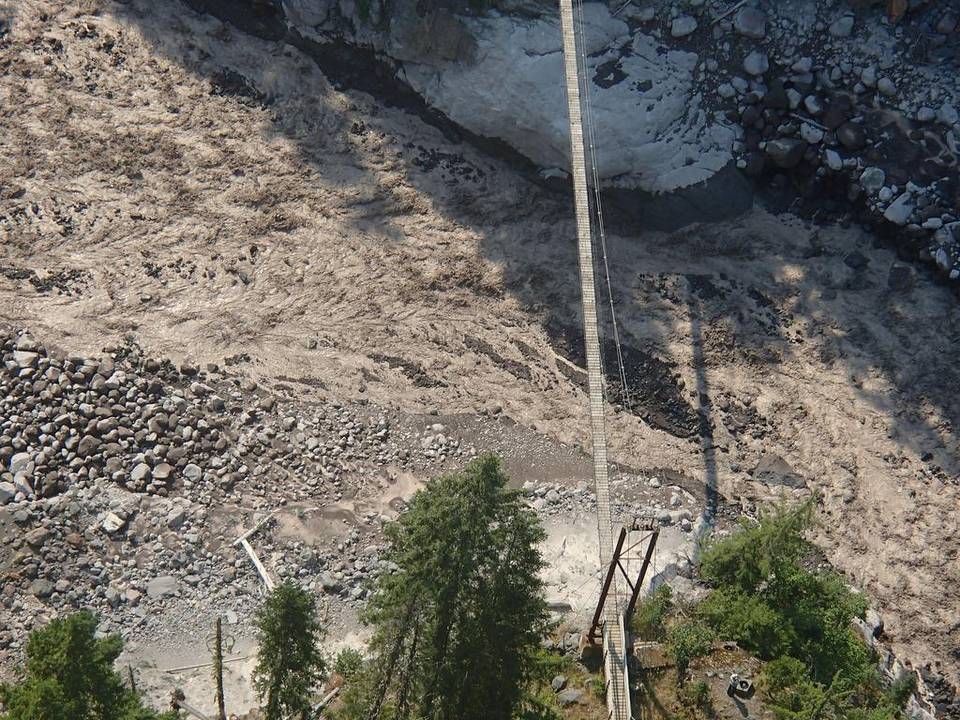By The Associated Press
and McClatchy News Service
MOUNT RAINIER NATIONAL PARK — Apparently triggered by a hot summer, a half-acre section of the South Tahoma Glacier broke off near Tahoma Creek in Mount Rainier National Park and caused a flood of water and debris.
The powerful “glacier outbursts” gouged out channels, swept away trees and shook the ground hard enough to register on seismometers.
“The sound of boulders rolling and smashing — it just got louder and louder, and you could hear trees snapping,” said Scott Beason, the national park’s geologist who was on the park’s Westside Road when one of the flows raced through the Tahoma Creek drainage.
Some of the trees carried downstream by the flow were at least 50-feet long.
No one was hurt.
Park staff surveyed the area by helicopter and were able to account for all hikers in the area.
But water and debris flooded over portions of the Westside Road, which will be closed at least through Sunday as park staff members watch for additional flows and assess damage to the road and area trails.
After observing the scene during a helicopter flight Thursday afternoon, Beason said it appeared that when the chunk of the terminus of the South Tahoma Glacier broke away, it released a torrent of meltwater.
Detached ice
Beason said it looked like a 300- to 400-foot section of the glacier has become disconnected from the rest.
“I’m thinking there was a water buildup in there because we’ve had such a hot summer,” he said.
“I think the water built up enough that it gave way at the foot of the glacier. It is a really steep terminus, there are claws and teeth of ice just sitting up waiting to fall.”
Zachary Jones, 18, of Snoqualmie was hiking up the road about noon Thursday when he and a companion heard a noise they at first mistook for a train.
When the road emerged from the woods and the creek came into view, they were stunned to see a muddy flow churning in their direction.
“The rumble was getting louder and trees were falling down and it looked like a big pile of rubble was raging down the dry creek bed,” said Jones, who captured the event on video.
“We saw huge boulders, half the size of a Volkswagen bug, just raging down and falling over each other.”
(** You can view the video on the Facebook page for “USGS Volcanoes.” **)
The pair had no idea what was happening.
“I thought it might be an earthquake,” Jones said. “It was pretty terrifying.”
Then a park employee came running down the road, yelling for them to evacuate.
The glacial outbursts and debris flows originated at an elevation of 6,800 feet on the South Tahoma Glacier.
They are the first such outbursts in the park in nearly a decade, Beason said.
Melting glaciers
Like all of Rainier’s glaciers, South Tahoma has been melting back rapidly.
Sections of the glacier’s “toe” are now stagnant — cut off from the upper reaches of the ice.
Between the 1980s and early 1990s, more than 30 debris flows from the glacier have occurred in the Tahoma Creek valley.
They carved out a deep channel that hikers cross via a suspension bridge over Tahoma Creek that’s part of the Wonderland Trail.
It’s possible another cycle has started, Beason said.
“This might be a kind of recurring thing now,” he said.
Carolyn Driedger, a hydrologist at the U.S. Geological Survey’s Cascades Volcano Observatory in Vancouver, Washington, said the outburst was one of the largest seen on the southwest flank of Mount Rainier.

